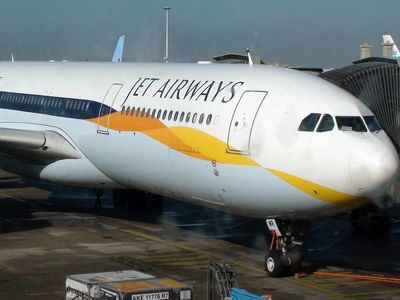May was a very happening month for Indian aviation. Announcements included the appointments of new CEOs, renewal of the licence of Jet Airways and unveiling of Akasa’s first aircraft! The restart of Jet Airways and start of Akasa could well be a month apart in the July-to-September quarter, typically a lean one, but it will offer the airlines a breather to scale up for the peak October-to-December season.
For Jet Airways, it has been a turbulent time. From initially doling out slots and bilaterals to the competition on a “temporary” basis to stating that the slots and bilaterals cannot be claimed, the three years have seen Jet Airways come full circle.
Read More:-Rupee recovers from record low, spurts 21 paise to 77.50 per US dollar
At its peak, Jet Airways had half of its capacity (by available seat kilometres, or ASK) on international routes. This helped the airline attain the scale that it did and definitely came up with multiple interline and codeshare agreements along with a scissor hub at Amsterdam, among others. All of which helped the airline with foreign ticket sales, tiding over dollar- denominated costs to an extent. But as it restarts, it cannot fly internationally from the first day of operations and will have to wait to build its fleet to 20 aircraft before it can start international operations again!
The infamous 5/20 and the current 0/20
Over the years, there has been immense lobbying to remove the five by twenty rule which mandated airlines in India to complete five years of operations and have a minimum of 20 aircraft in its fleet to start international services. When the National Civil Aviation Policy was framed in 2016, the rule was replaced by 0/20 which allows the airline to start international operations after having 20 aircraft in its fleet irrespective of the number of years of flying in domestic skies.
Read More:-March quarter earnings largely stable, give broad-based growth outlook for FY23-24, says this report
No wonder then that Akasa has been talking about getting four planes to begin with and targeting closer to 20 planes by the end of one year of operations. It is unclear how Jet Airways aims to start. It has a fleet of aircraft but it leased another for its proving flight. How many aircraft it will have when the airline starts is anybody’s guess as of now. While aircraft were available in plenty in 2020 and 2021, things are getting difficult in 2022 as travel makes a comeback globally following the pandemic.
Bilaterals the challenge
International flights are governed by the Air Services Agreement (ASA) in addition to obtaining slots at congested airports. ASA decides the flights allowed between two countries and has caps based on seats or frequencies or both. They also come with the points where one can fly.
Read More:-Pan Card Update: Even if you are not 18 years old, you will get a PAN card, know how
The most popular and in-demand sectors have their rights already allotted to carriers that are utilising them to the maximum. This includes flights between India and Singapore, and India and Dubai, among others. The situation is nearly identical to neighbouring countries like Bangladesh, Nepal and Maldives. The most lucrative route to London Heathrow, which has a cap of 56 flights per week from Mumbai and Delhi, may see those being exhausted in a short span of time.
While the National Civil Aviation Policy envisions negotiation for enhanced seats when the Indian side utilises 80% of the quota, there has not been any movement on those lines since the policy was formalised.
Vistara has been lucky. The airline started flying internationally and soon saw Jet Airways scale down, followed by its suspension. This freed up the much needed seats and frequencies in various ASAs, allowing the airline to expand on international routes. To hope for another airline to fail and wait for those rights could be a dream that cannot be relied on from a planning perspective.
Breather for Air India, IndiGo
Air India, under its new owners, the Tata group, and IndiGo, with the A321XLR aircraft, have ambitions to dominate international flights out of India. This involves flying to new destinations and expanding to the current ones.
Read More:-RBI may cut India’s growth projections, shift focus to inflation control over growth: Barclays
Both Akasa and Jet Airways could look at going beyond the tried and tested destinations for availability of seats and the time until they induct 20 planes is what Air India and IndiGo have to ramp up and expand to ensure that they make the most of available bilaterals and turn most sectors into what Dubai and Singapore are today.
On the narrow-body front, IndiGo has already made a headstart, having started flights to Vietnam, China and Turkey apart from the regular destinations in the Middle East and South-East Asia. Air India had a large presence in Europe pre-COVID and could look at getting back once it resolves its fleet issues.
Tail NoteIt is a four-way race from now on. For Akasa and Jet Airways to scale up to 20 aircraft and be eligible for international use when they can look for available rights and plan their network and at the same time for Air India to get its act right with its fleet and expand to keep IndiGo at bay from entering its markets. IndiGo, on the other hand, has to make the most of the time it has to reach places it can with the A321neo, until the XLRs join its fleet! With a presence at three-fourths of Indian airports, IndiGo is on the cusp of a growth phase where it can feed traffic from most of the country.



































